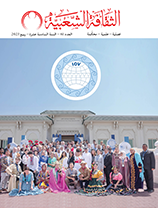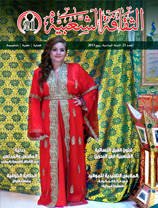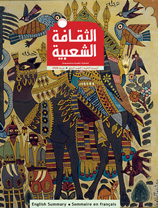About Some Forms of Consciousness of the Imaginary
Issue 8

Mohammed Nooreddin Affaya (Morocco)
The reason for this phenomenon is that the philosophy considers imagination as an element that disrupts the functioning of brain, as Descartes puts it, so it should be removed from the process of knowledge as the latter is a pure product of the work of mind that considers the principles of reason as its logic and main point of reference. The imagination can be considered as belonging to the field of the theory of literature or artistic criticism, or related to the world of Sufism and religions, but it is very rarely considered within the field of philosophical thinking. The philosophical logic, undoubtedly, has its justified considerations in dealing with the topics of imagination and imaginary, because these topics embrace legends, tales, stories, dreams and all symbolic products that go beyond the limits of mind. The marginal consideration of these elements as a confusing factor for the work of mind means dealing with the human ego just from the point of view that solely considers the mental aspects of human thinking. Dreams, imaginaries, feelings, etc. are located below the level of intellect. But the individual is neither only an intellect nor it is just a consciousness, he or she is a “contradictory” human creature who, in essence, embraces wish, dream, brain and reality, and who combines inside himself all talents, which struggle with one another inside one’s brain and hence produce linguistic and symbolic forms that are possibly dominated by reason, or possibly express aesthetic traits that do not necessarily follow the prevailing mental order. Inventions of modernity since the nineteenth century until now, however, have unprecedentedly revolutionized the way the picture and the products of imagination are considered. Invention of photography, cinema and television and boom of book industry and distribution loosened the severity of mental discourse so that the symbols of these inventions and their products began to interact with the imaginary more than to dialogue with the individual’s mind. These symbols of inventions, given their different expressions and aspects, have moved from shaded and marginal areas to a place where they became a visible material that feeds the eye from all possible directions. The modern city became a symbolic, meaningful reservoir, where the picture occupies an exceptional position. It seems as if all radical changes that have been set up by the modernity, and that the visionary symbols that distinguish all spaces of the modern city, give more than a justification to recall the Platonic saying that “The man who was able to grasp the picture could grasp the soul”. In its different types and ways of expression, writing, as well as creativity, creates a rich aspect for the imaginary work, which in turn, given its forms, metaphors, similes and legends, can create an opportunity for the cultural dialogue more than what a strict reasonable interest might provide. Being an expression of conscious and subconscious stocks of the bodies of the writer and the artist, writing and art act in principal as a special appeal. The written script is an invitation for a meeting between the writer’s imagination on the one hand, and the supposed reader, on the other hand. In his turn, the reader will read, based on his own symbolic imagination, and in this process, either the interaction between the two sides takes place or the alienation stabilizes. The author mentions that imagination, as an aspect for the flow of symbols, is not confined to rephrasing things or reordering of pictures and tales. The reason is that to the extent that imagination involves the individual ego in its process of production, it exceeds that ego to satisfy the considerations of the “Social Imaginary”, as the French philosopher Paul Recor puts it. The researcher indicates that since the period of Illuminationist Philosophy until now, the west has combined two levels of its ingredients: production of ego and of elements of its identity, on the one hand, and criticism of this ego and of the transformations of identity, on the other hand. This criticism, at times, takes place in the name of reason; at other times it takes a form of a radical negative attitude towards what exists, and at other times it acts in the name of irrationality and of reconsidering the imaginary. Hence, the history of western thought had invented several methods and ways that made it a unique combination of different, conflicting approaches and sensitivities that sometimes hits the level of dispute and mutual liquidation.







































































